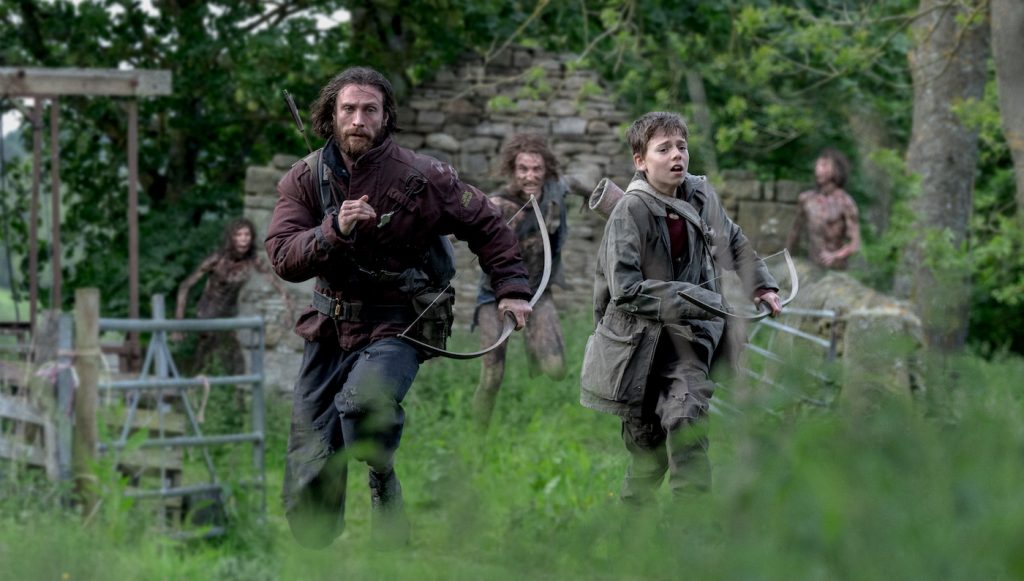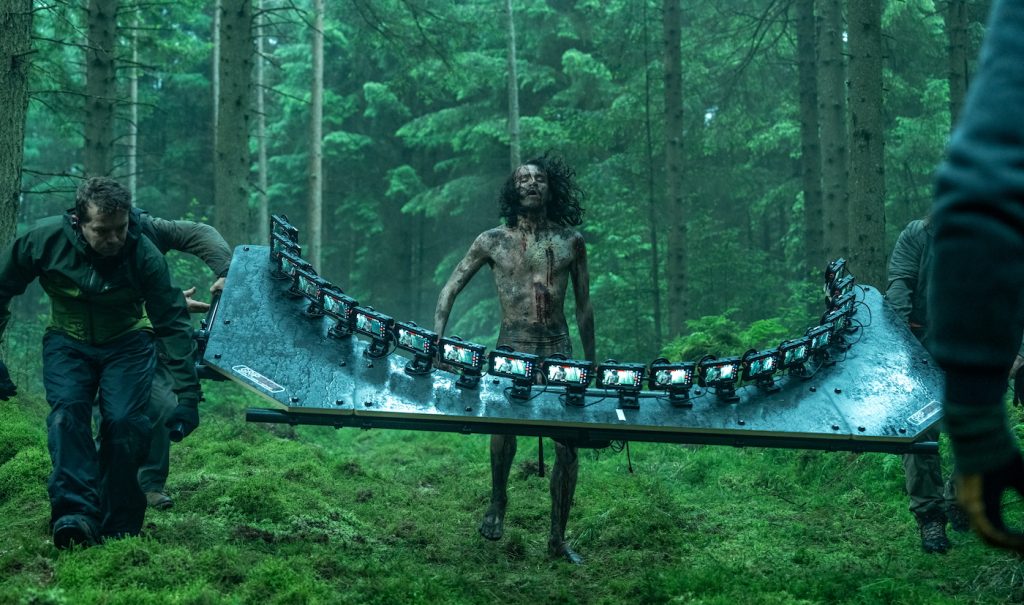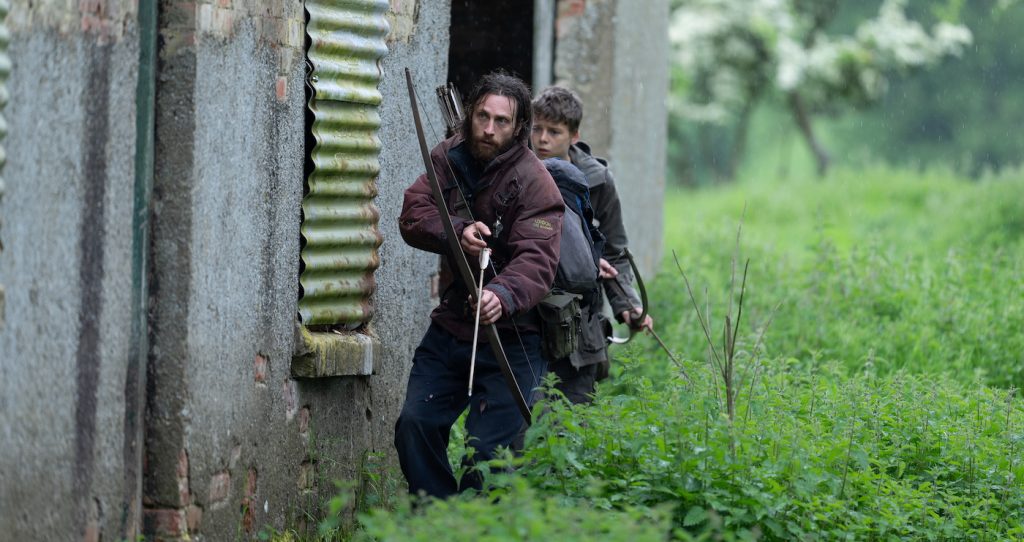Death Metal Vocals & Brutalized Cabbages: How Sound Designer Johnnie Burn Crafted “28 Years Later” Sonic Terror
Sound designer Johnnie Burn had just won the Academy Award for his dread-inducing contributions to The Zone of Interest when he got a late-night phone call from 28 Years Later director Danny Boyle. “I was drunk at the Vanity Fair party after the Oscar win when someone called from my office in London and handed the phone to Danny Boyle, who was standing in the reception,” Burn recalls. “Danny said, ‘I know you’re not here in London because I just saw you on the telly, but will you do the sound on my next film? And I said, ‘Yeah, of course.’ The tendrils of zombie sounds in 28 Days Later extend into so much of horror culture over the last three decades, and I was also in awe of how he put together the 2012 London Olympics opening ceremony. So this became my first go with Danny.”
Now that he’s infused the post-apocalyptic zombie drama 28 Years Later with its own feral identity, Burn can add Boyle to his list of auteur collaborators. In addition to Zone of Interest director Jonathan Glazer, Burn has become the go-to designer for Jordan Peele (Nope, Get Out) and Yorgos Lanthimos (The Favourite, Poor Things), as well as Oscar-winning director Chloé Zhao (Nomadland—Burn worked on her upcoming film, Hamnet).
Speaking from his home in Brighton, England, Burn explains the science of jump scares, describes Great Britain’s quietest stretch of wilderness, and salutes the death metal vocalist who screamed his guts out to voice 28 Years Later‘s alpha zombie.
Johnnie, you once said, “We process image but we react to sound.” Can you elaborate on that idea and how you implemented it in 28 Years Later?
There’s an actual statistic that says you react to an image in about 100 milliseconds, whereas sound takes only 15 milliseconds because it goes to a different part of the brain, through the limbic system, rather than the cerebral cortex. When you lull people into a sense of security, then throw something incredibly loud and fast at them, it’s very visceral. Imagine somebody breathed in your ear, versus showing someone an image of a nostril. In this film, there are at least five times when we tried to get people with the jump scares before they realized what was happening. “Oh-my-god-oh-s***” You can shut your eyes, but you can’t shut your ears.
How did your approach fit into Danny Boyle’s creative brief?
Danny basically said he wanted it to be exciting and relatable and surprising and loud, and he kept saying the loud bit, and I never realized quite how loud he wanted it! My ears were ringing at the end of the movie.
To capture the ambient sound of the virus-wracked United Kingdom, you and your team traveled to northern England and the island of Lindisfarne where 28 Years Later was mainly shot?
Yes. There’s probably only one sound I’d happily take out of a stock sound library, and that would be the Wilhelm Scream, so we visited the locations the filmmakers had been to in the previous few weeks and recorded footsteps and the wildlife comprehensively across the whole film for every scene. But, unfortunately, when we went to Lindisfarne and Yorkshire, we found there wasn’t the lack of traffic noise that we’d expected.

So where did you find your car-free wilderness?
We had to go 100 miles west deep into the Welsh hills, where the valleys are so steep and thick with woods that the [traffic] sound doesn’t travel. We spent a few days there, wandering around, capturing birds, babbling streams and brooks, and crunching twigs, trying to gather enough layers of sound to create the density this film needed to suggest that nature had been allowed to run rampant.
You literally could not find a stretch of rural landscape in northern England free of car noise?
Even at three in the morning, there’s always some road a few miles away emanating white noise-y hiss that interrupts the owl you’re trying to capture. So we asked the Foley team to take an iPad with them into the forest in Wales, watch the film, hold the mic, and do the actual stuff for real. The more credible the sound, the deeper the emotion.
A terrifying moment of horror occurs when the “evolved” zombie Samson unleashes his primal roar in the direction of young Spike and his father. Where did that scream come from?
For a good couple of months, that was me, making this loud guttural roar. Then my friends and people at my company all had a go at it, doing various roars.
Various roars.
Various roars. [laughing]. But then, when we did the final sound mix for the film in London at this [post-production] place called Halo, there was this guy who helped set up the engineering technicalities. Danny said, “It’d be nice if we could get that main zombie voice just a little bit richer and a little bit longer.” That’s when the tech guy let slip that he was the vocalist in a death metal band!
No kidding.
So we got a microphone, and that’s the scream you hear in the film now. It’s brilliant.

Unlike Samson, most people infected with the Rage Virus have no cognitive powers, right?
That’s right. The alpha zombie was about intoning a certain amount of cerebral awareness, but for our less intellectual zombies, it was important that they be absolutely animalistic and show no sense of knowing or understanding.
How did you achieve that?
We had a line of 30 loop group actors walking up to a microphone and doing their own versions of a zombie scream. It’s very amusing to see them all getting into zombie mode, limping, [acting like they have] missing limbs, and then growling “arggh.” Turns out that it’s actually quite difficult to do zombie-infected screams. It’s easy to do ones that sound like a hammy actor or a pirate, but to vocalize a guttural sound that makes an immediate connection, you actually have to put your heart and soul into it and work up a bit of a sweat.
In 28 Years Later, it’s all about analog weaponry and their sickening sounds of impact.
For the hits, that was a large assortment of cabbages being brutalized by various implements to find the right sound for bodily impact [laughing].

Your sound design here blends really well with the score by UK rap duo The Young Fathers. What were they like to work with?
They were fantastic. A few times, we looked at scenes together where I might say, “At this point, if you’re going low, I’ll make sure the birds go up high.” I’m always trying to make the music feel like it’s coming out of a piece of wind or birdsong, to make the soundscape [and music] feel like it’s part of the same thing.
You’ve become a favorite of auteurs like Jordan Peele, Yorgos Lanthimos, Jonathan Glazer, and now Danny Boyle. What, if anything, do all these filmmakers have in common?
They’re all driven to create something groundbreaking, fresh, and innovative within the storytelling paradigm of cinema. And all these directors are humming at their best when they work with the same crew more than once, because your crew can then help them understand the tools they have. “I know Johnnie can do that. So and so can do this.”
If we can circle back to something you mentioned earlier: What is the Wilhelm Scream?
The Wilhelm Scream is a recording made by the actor Sheb Wooley, hired to do ADR voice screams [of a man eaten by an alligator in the 1951 film Distant Drums]. Everyone in the sound industry knows it because this scream has made its way into Return of the Jedi, when the three stormtroopers go down; it’s also featured in Jaws and Nope. Once you’re aware of the Wilhelm Scream, you hear it everywhere!
Several movies you’ve worked on are steeped in dread, but 28 Years Later is your first zombie picture. What’s your takeaway after being immersed for a few months in Danny Boyle’s post-apocalyptic horror world?
It was good fun because of the film’s potential for sound to scare the hell out of people and paint a picture of England gone feral. For me, that was very enjoyable.
Featured image: An infected in Columbia Pictures’ 28 YEARS LATER.



